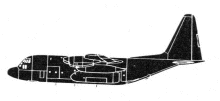Incident Overview

Description
The Lockheed C-130A Hercules transport plane impacted terrain and burned on takeoff from Luanda, Angola. All ten on board were killed. The aircraft operated on an unscheduled cargo flight to Cafunfo, Angola. Flight DTA1228 was the third trip of the day to Cafunfo. It was carrying supplies for the Lunda Norte Province. On board were four flight crew members and six passengers. The flight contacted the air traffic controller at Luanda Airport at 15:12 to start the engines. The flight was told it could start up at 15:30 hours. The aircraft was then cleared to the holding point at taxiway Bravo and stop before crossing runway 26. Heavy traffic forced the flight to wait for six minutes and at 15:40 it was cleared to cross runway 26 to runway 24 and line up for departure. Clearance for takeoff was given immediately. As the aircraft was climbing through 50-60 metres when it stalled and fell to the left. The aircraft impacted the ground and a fire erupted. The investigation into the cause of the crash was severely hampered by the fact that the wreckage had been moved from the scene by the orders of an Air Force official, without authorization of the civil aviation authorities (DNAC). Additionally, both flight recorders were not located in the wreckage. The commission found several pieces of debris along the right side of the runway, 300-400 meters from the crash site. “The accident is deduced to have originated with a probable internal explosion of an unidentified foreign object that perhaps had as its site of action an area of the fuel storage area on the right wing of the aircraft. When the explosion occurred, it would have caused the craft to dip to the right owing to the lack of support on the aerodynamic planes on that side and then to fall to angle of more or less 45 degrees with runway 24 due to asymmetry in the weight of that wing. Greater weight on the [left] side’ may have caused the aircraft to stall, because the first impact actually was made by the tip of the left wing striking the ground, prior to the fire that destroyed it totally.”
Source of Information
http://ipisresearch.be/wp-content/uploads/2017/02/Hercules_v004.pdfhttp://ipisresearch.be/wp-content/uploads/2017/02/Hercules_v004.pdfPrimary Cause
Probable internal explosion of an unidentified foreign object, potentially originating from an area of fuel storage on the right wing, caused by a tip of the left wing striking the ground during takeoff.Probable internal explosion of an unidentified foreign object, potentially originating from an area of fuel storage on the right wing, caused by a tip of the left wing striking the ground during takeoff.Share on:



